Exploring JR’s exhibition in Seoul
ART MAY not change the world, but it can change the way we see the world, says the celebrated street artist JR. Prominently known as the owner of the largest gallery in the world, the world’s streets are his exhibition, where every passerby is a visitor. The JR: Chronicles held at the Lotte Museum Art of Seoul curates snippets of his works that allow visitors to follow his journey toward instigating change through art.
The photograffuer
Born in France in 1983, JR embarked on his artistic career as a teenage graffiti artist. At the age of 15, he started exploring the city with his friends, leaving his name on rooftops and subway trains, as he photographed his excursions with a crude camera he found at a subway station. He began printing these photos in black-and-white to paste on the empty walls of the sidewalks and spray-painted the outlines to make them appear like frames. This eventually became his first “Expo De Rue,” the “sidewalk gallery[1],” marking his debut as a photograffuer[2].
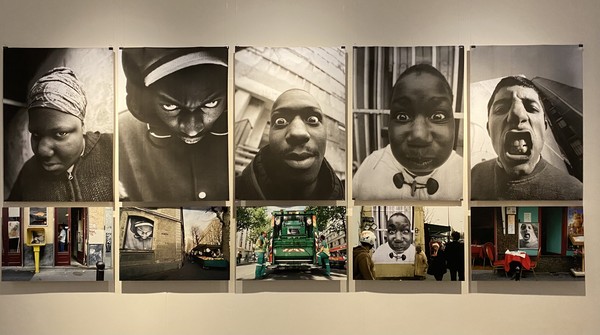
JR’s works began interacting more intimately with the public starting with the Portrait of the Generation project. In November 2005, the electrocution of black and Arab teenage boys fleeing from the police at the electricity substation triggered riots in Les Bosquets, a suburb of Paris. While the rebellion was caused by swelling rage toward ubiquitous racial profiling and segregation[3], the media framed the rioters as violent, out-of-control thugs who were threats to national identity. Hoping to dissolve such fear, JR took full-frame portraits of the rioters caricaturing themselves with threatening faces and glued them on the walls of Les Bosquets and bourgeoisie regions of Paris. The close-up pictures portrayed each person as an ordinary individual rather than an anonymous assailant in a tumultuous crowd, prompting viewers to reevaluate their preconceived notions of the rioters.
Delivering a social commentary
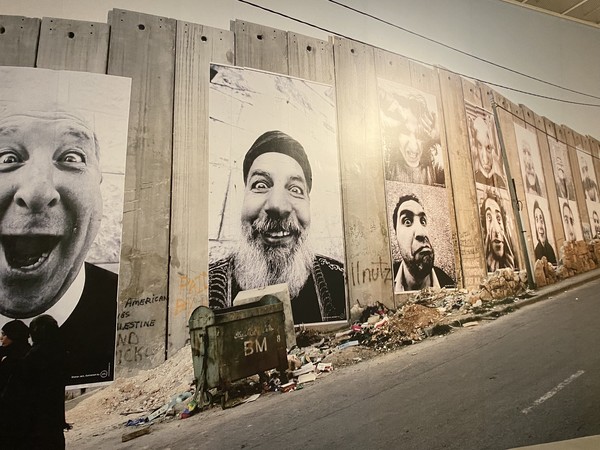
In the following works, JR continued using photographs to explore art in different sociopolitical contexts. In 2007, JR decided to explore the Israeli-Palestinian conflict[4] by visiting cities in both regions. As a part of the Face 2 Face project, he took portraits of joyous, comical faces of Palestinians and Israelis with the same jobs—doctors, lawyers, athletes, and taxi drivers—to paste on the border wall. By putting portraits face to face, JR showed that the people of Palestine and Israel look alike—as if long lost brothers and sisters—despite the immense chasm created by prejudice.
The next destination for his street gallery project was Moro de Providencia, a favela[4] located in Rio De Janeiro, Brazil where clashes between drug dealers and the police run rampant. JR captured the eyes and faces of local women and pasted them on the houses of the neighborhood for one of his most renowned works, Women Are Heroes (2008-2014). The project paid tribute to women who play integral roles in society while bearing the brunt of violence. Expanding the project to Cambodia, Kenya, India, Liberia, and Sierra Leone, Women Are Heroes delivered the raw stories of women who experienced adversities in the form of domestic abuse, rape, and children’s deaths by homicide. Instead of defining these women by such injustice and tragedies or treating them as a source of inspiration through romanticized tales, JR expresses the individuality of each participant by capturing their varied facial expressions with his camera.
JR’s recent works
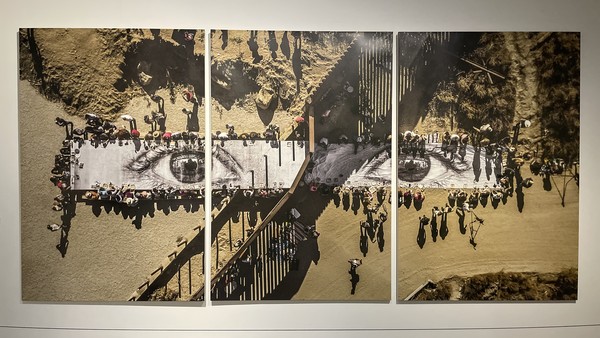
A more recent work from 2017 directs the viewers to the infamous border dividing Mexico and the United States. Giants, Kikito is an installation of the monumental photograph of Kikito—a toddler living in the Mexican city of Tecate—peeking over the tall, sturdy barrier. The playful and oblivious face of the child strikes as inexplicably out of place with the 9 m fence. Thus, viewers must question the validity of the blockade that stands as a political symbol of exclusion and distorted nationalism. On the last day of the installation, JR organized a picnic at the border on both sides of the fence. Mexicans and Americans sharing their foods, stories, and songs through the gaps between fences became a symbol of connection and humanness transcending nationality and immigration status.
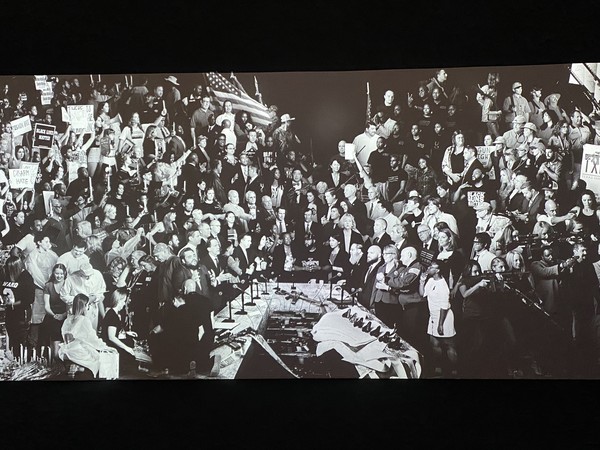
JR further pondered on social issues through large murals in the Chronicles series. The Gun Chronicles: A Story of America (2018) displays individuals with a spectrum of perspectives on gun violence, including victims of mass shootings, law enforcement officials, gun collectors, and firearm industry lobbyists. The mural illustrates 245 people who either support gun rights—shown through people aiming their guns—and those who support gun control—symbolized by holding candles in tribute to victims of gun violence. Rather than presenting a solution, JR exposes the viewers to the diverse views held by individuals with varied experiences and backgrounds. Every person and every voice is presented with equal significance, encouraging viewers to navigate towards a common ground between those who hold seemingly irreconcilable views. The Gun Chronicles reflects one crucial characteristic of JR’s works: no messages are forced upon the audience. Instead, words are let to freely speak for themselves while viewers are left to ponder upon the art and draw their own conclusions. The Chronicles of San Francisco (2018), another work in the Chronicles series, represented a total of 1200 people in ways they wished to be portrayed through a digital installation. By capturing different people—from leaders of representative companies to homeless men and women—it illustrates the diversity of the people that contribute to the city’s complexity.
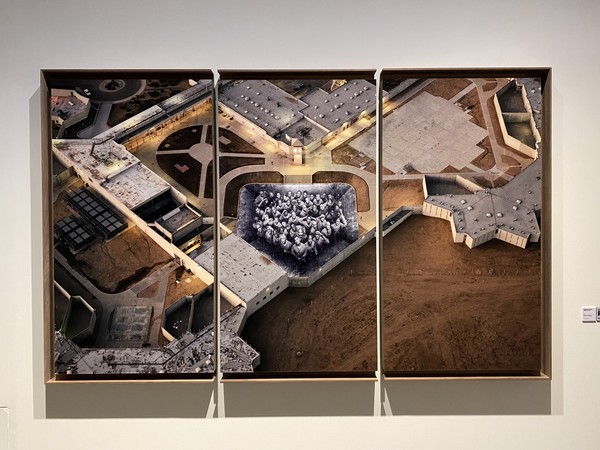
In October 2019, JR took an audacious attempt to create art at a maximum-security prison in Tehachapi, California. He met 28 prisoners and photographed every inmate who candidly shared their stories in front of the camera. The inmates and prison staff—who were apathetic to one another—participated in pasting the photographs on the prison yard. This action overcame the confined cells of isolation and indifference, allowing inmates to feel the warmth of human interaction and a sense of respect.
* * *
JR’s art unfolds on the street walls, rooftops, and houses, located in the most unexpected and perilous places. There, art spotlights faceless people in society and their unique personal stories. The photographs pasted on the walls can wear out, collapse, or be forcefully removed due to their illegality. Yet, the influence of JR’s works is indelibly engraved in the history of contemporary art, as well as the living memories of the participants and visitors of his works.
Period: 2023.05.03-2023.08.06
Entry Hours: 10:30-19:00
Admission: Adults ₩12,000
Address: Lotte World Tower, 300, Olympic-ro, Songpa-gu, Seoul
[1] TED
[2] Photograffuer: A portmanteau of photographer and graffuer—French for graffiti artist
[3] Aljazeera
[4] Israeli-Palestinian conflict: A series of military confrontations between Jewish and Arab populations
[4] Favela: A slum or shanty town located in the outskirts of large cities in Brazil

